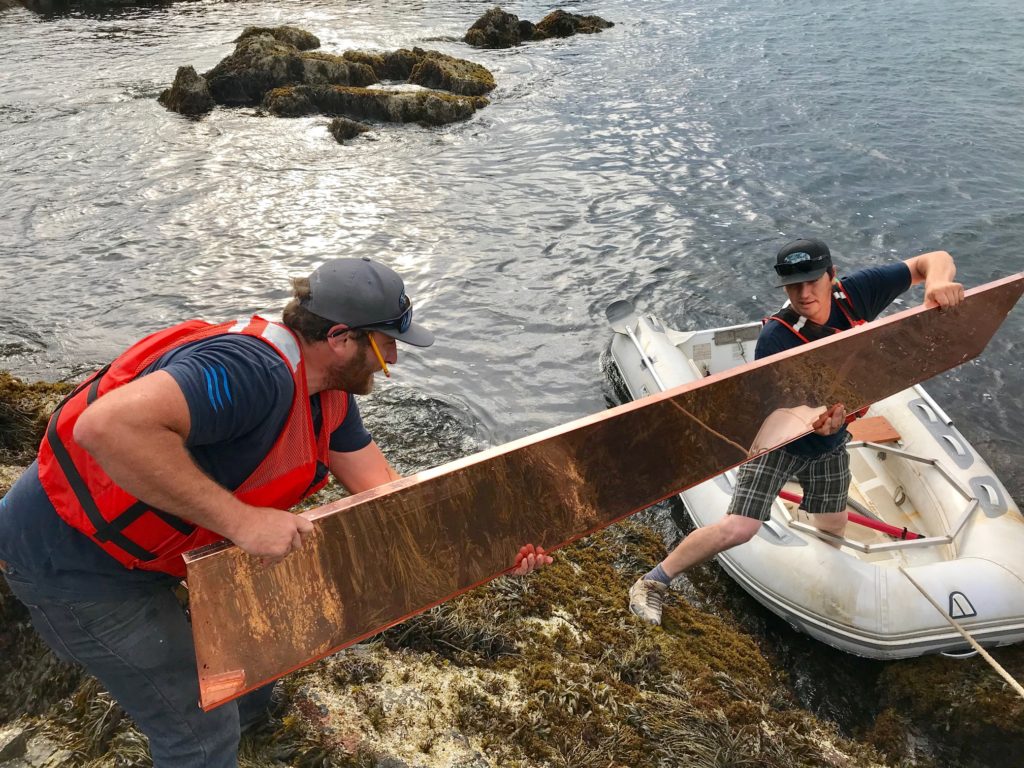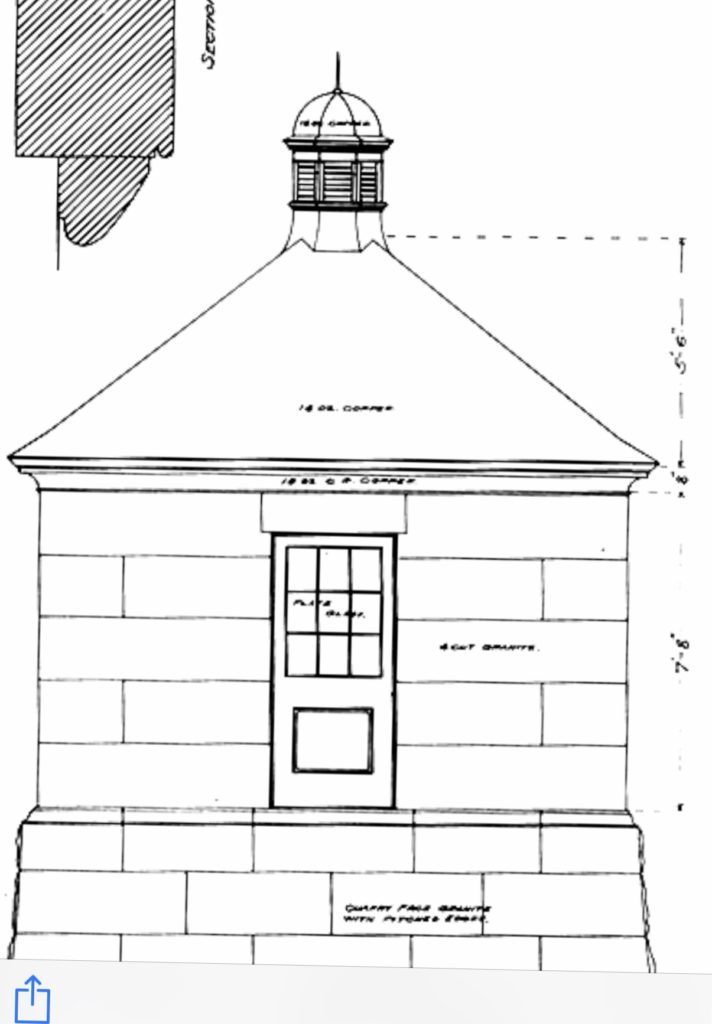Let’s talk about pillows! We found these great old Navy signal flags and sister Sue expertly crafted them into colorful pillows for the patio furniture at the Oil House.
The letters spell “N-A-Y-O-V.”
What can you spell with the letters “A-N-O-V-Y”?
Let’s talk about pillows! We found these great old Navy signal flags and sister Sue expertly crafted them into colorful pillows for the patio furniture at the Oil House.
The letters spell “N-A-Y-O-V.”
What can you spell with the letters “A-N-O-V-Y”?

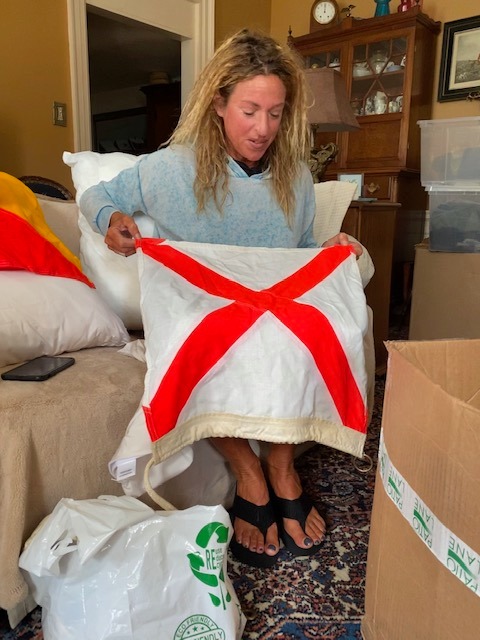
Big week over at the Oil House brings master carpenter Karl and his crew back for a 7th straight season.
While Peter pulled up the mahogany decking, Karl and Sunny, with assists from Rowan, built this magnificent upper deck, complete with a stanchion railing salvaged from a World War II minesweeper.
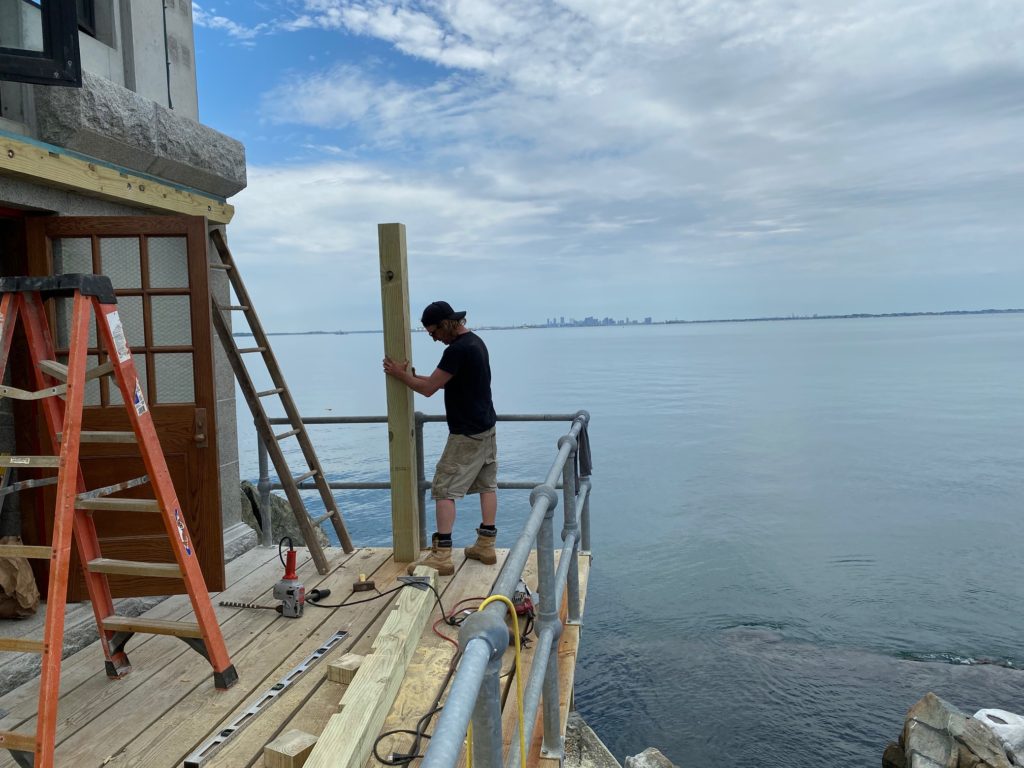

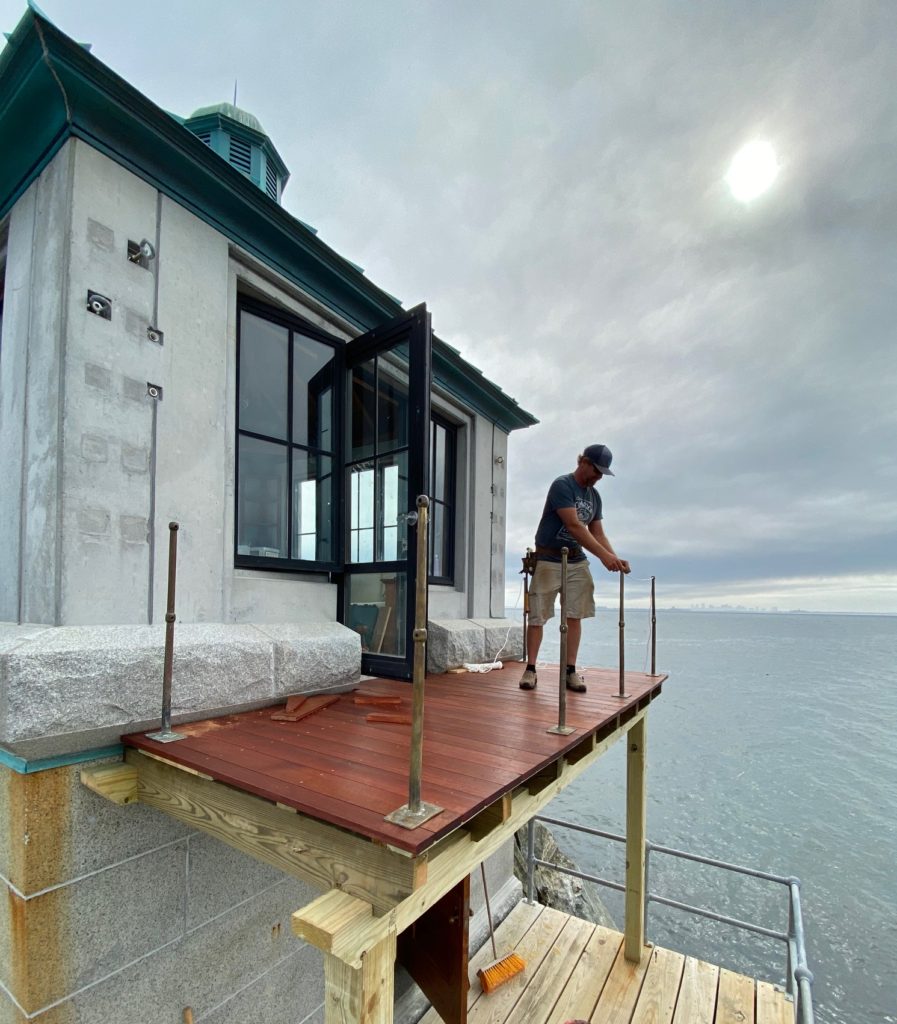

We had the good fortune to bring in the talents of master rigger José Hernandez Juviel and his wife Becky to weave and knot a traditional rope railing for the oil house.
Few are skilled in his maritime trade, and it was a privilege for him to design and build it out of sturdy hemp, with a pine tar finish. So many able hands have touched Graves Light to make it shine. A hearty “Three Bells” to José and Becky!


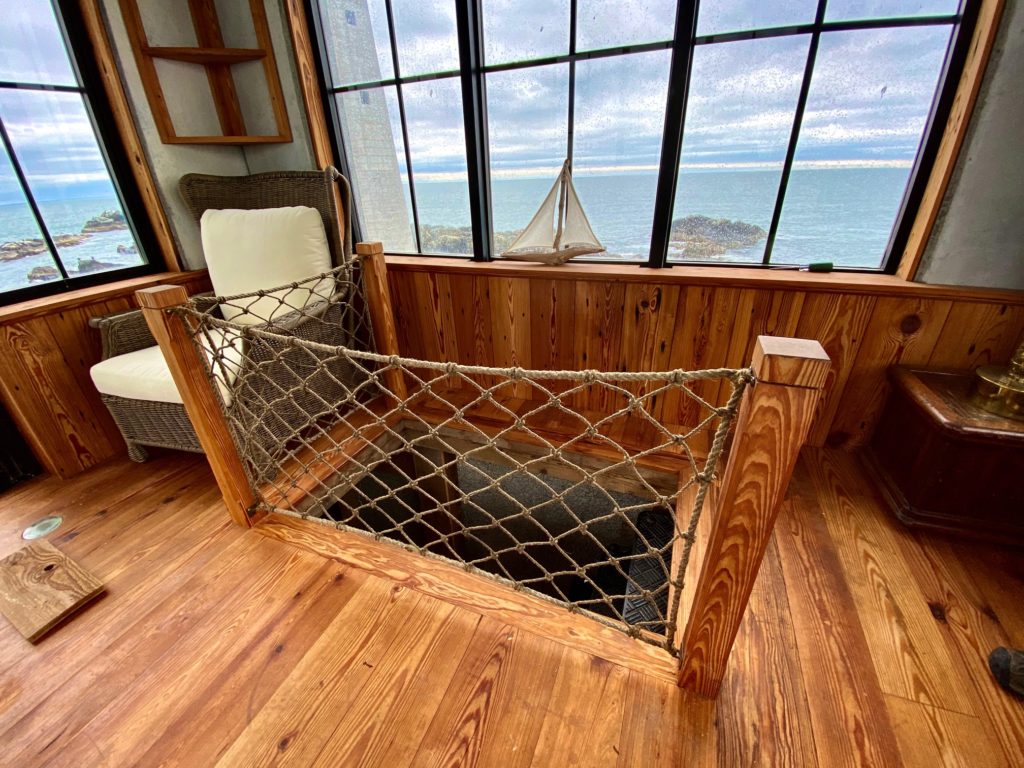

Winter is a great time for projects back in the shop. Finishing off the custom bridge railings and connecting them to the Oil House was this weekend’s focus.
The sections will be hot-dip galvanized and ought to be ready in a few weeks. Then we can prefab the porch, take down the hurricane panels and be ready for spring.

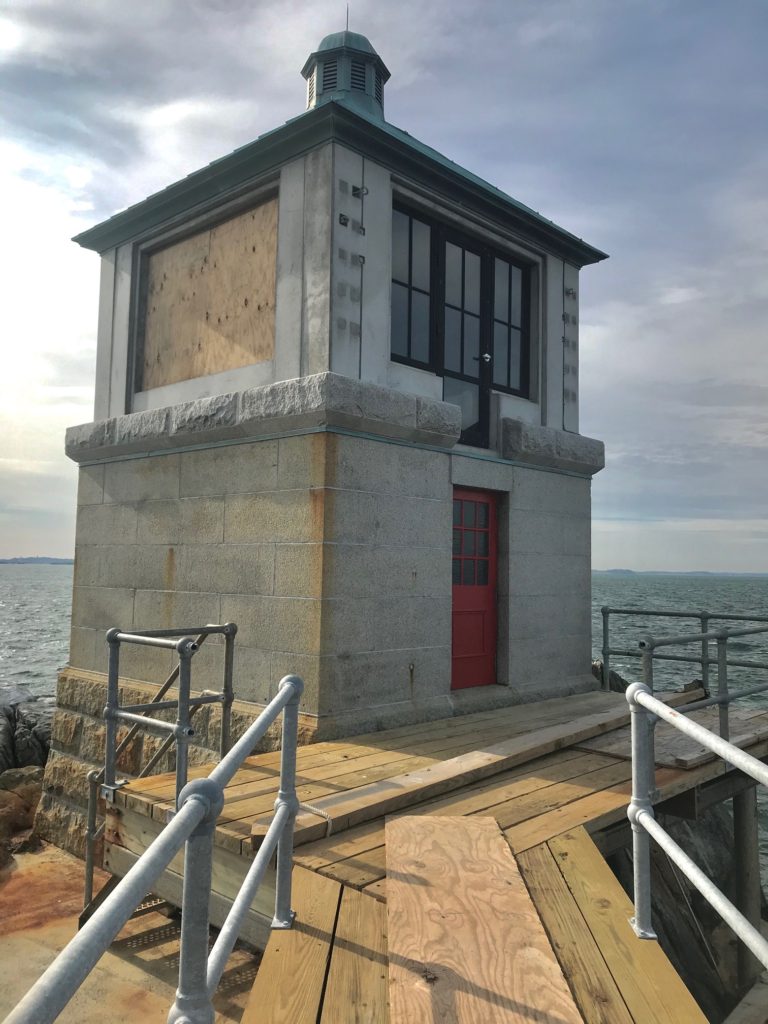
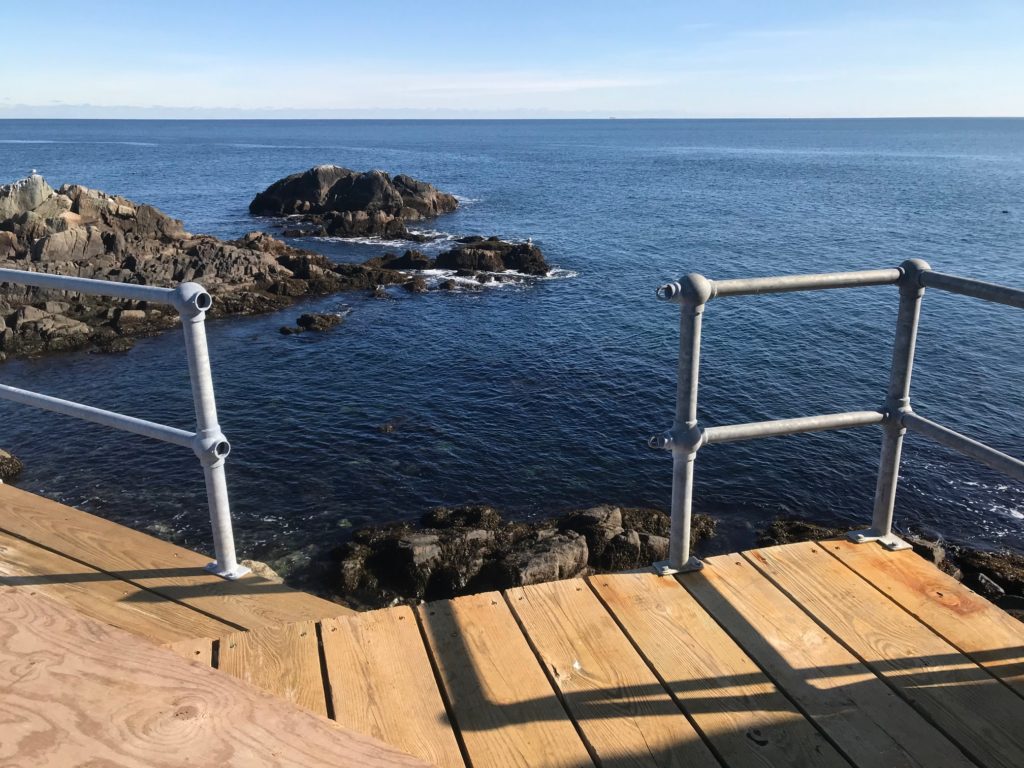
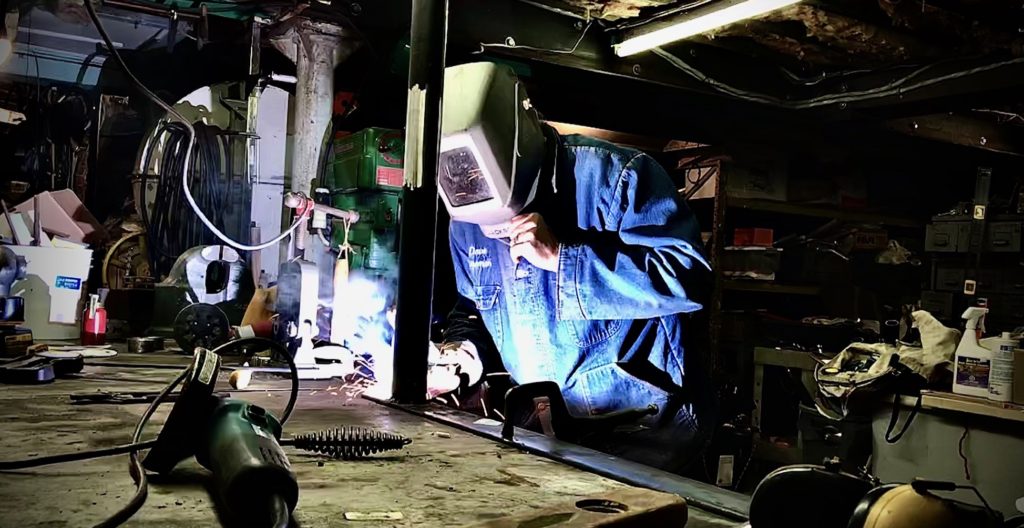
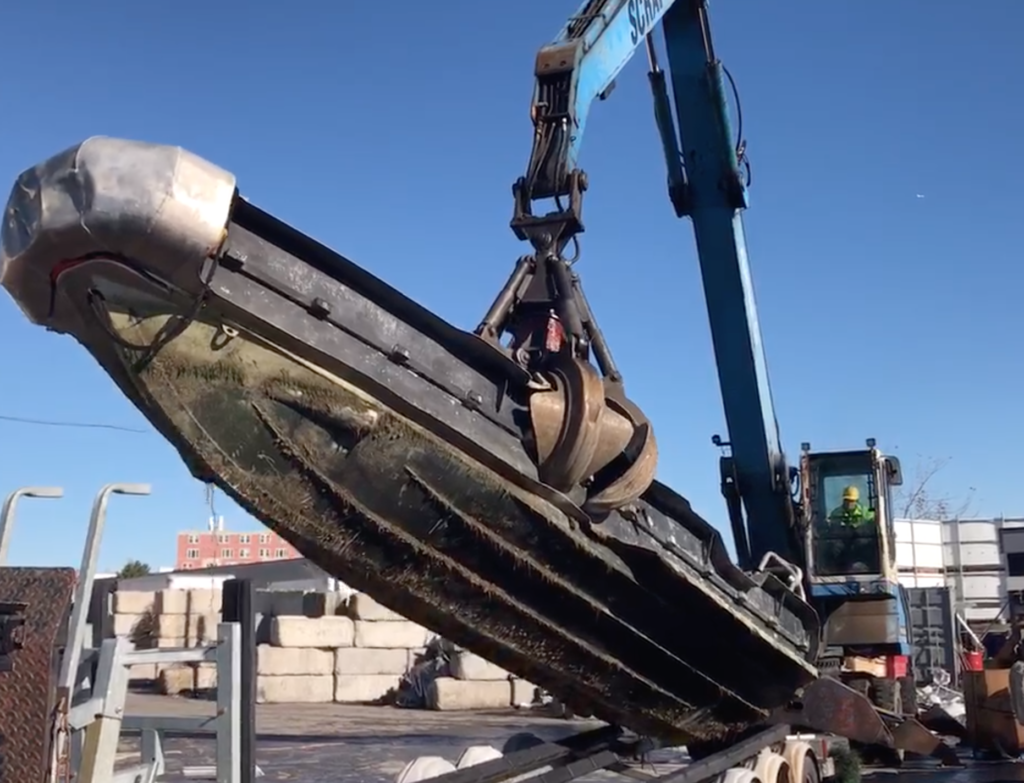
Not everything at Graves Light is happy and fun. Our trusty Miss Cuddy I went to the scrap yard. The former Coast Guard Defender-class boat ferried us all back and forth from the lighthouse until bad seas dragged her on her moorings to a terrible beating on Graves Ledge.
We removed Miss Cuddy‘s pilot house and turned her into a service barge. She spent all of 2019 doing the drudge work for the Oil House and footbridge.
This week we took her to a scrap yard in Everett. We gave the pilot house to a local tugboat operator and one of the engines to our roofer, and salvaged a bunch of small parts for her replacement, Miss Cuddy II. We had to strip the two big orange flotation collars off her hull.
At the scrap yard, she weighed in at 5,200 pounds of aluminum hull and other metal parts, including the old Coast Guard gun mounts.
It was a sad sight indeed to see her crunched up and tossed onto the scrap heap like an old toy. Afterward we saw Toy Story 4.
Miss Cuddy I sure did give us years of great service. Using her hull as a barge worked out great for ferrying the stone, copper, and steel parts for the reconstructed Oil House and footbridge.
“Twilight and evening bell,
– Alfred, Lord Tennyson
And after that the dark!
And may there be no sadness of farewell,
When I embark;
For tho’ from out our bourne of Time and Place
The flood may bear me far,
I hope to see my Pilot face to face
When I have crost the bar.”

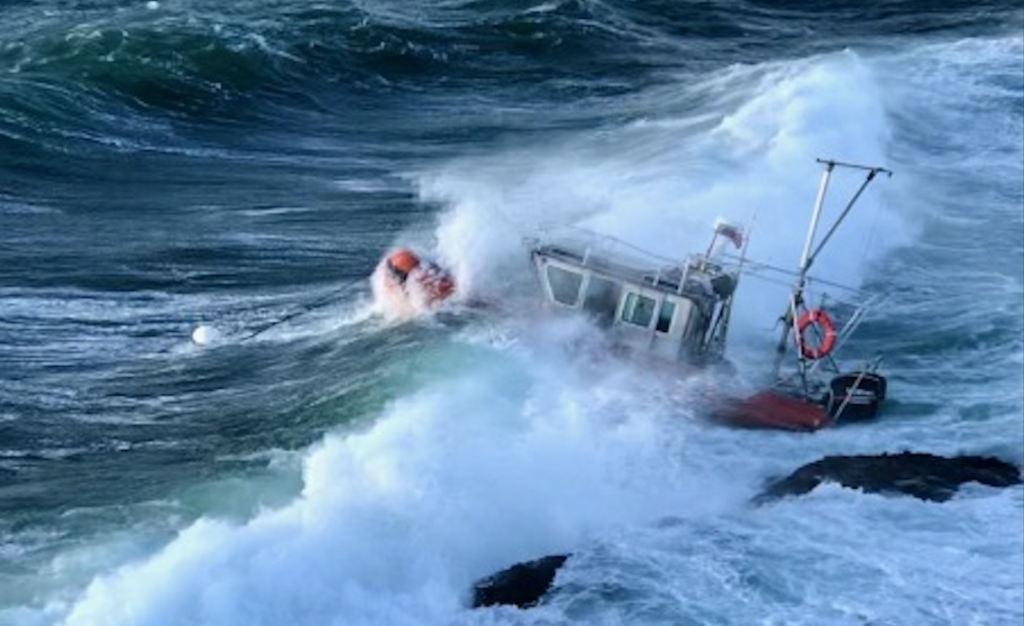
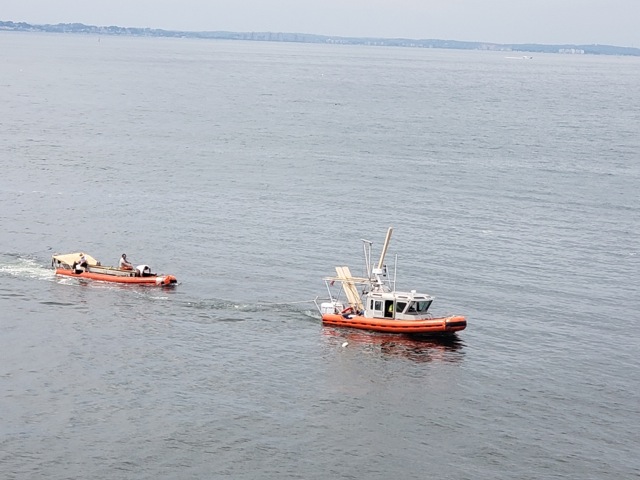
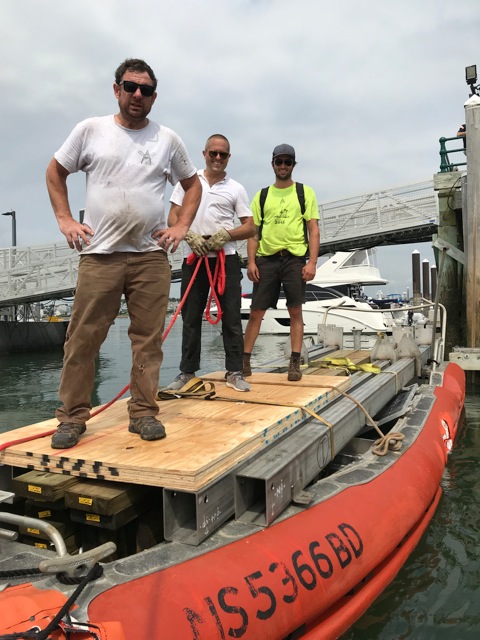

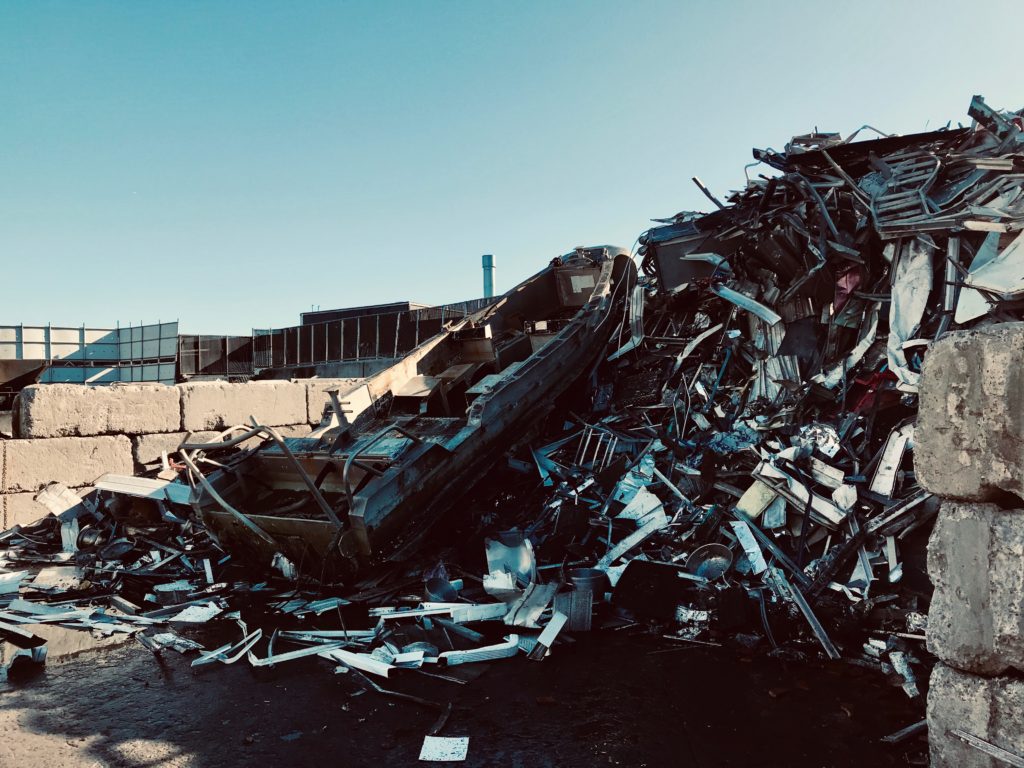
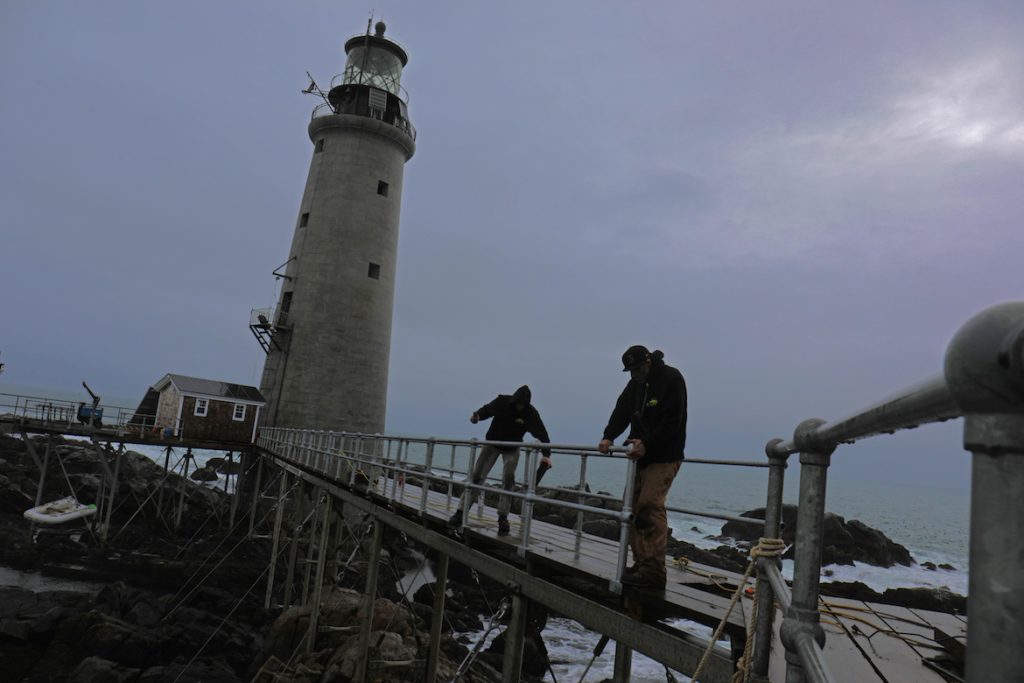
We’re very excited to share the news that our two-year restoration and reconstruction of the historical Oil House and footbridge are now complete.
The original Graves footbridge, a steel structure that spanned the channel in Graves Ledge to link the lighthouse to the granite Oil House more than 100 feet away, was partially destroyed in the Great Blizzard of ’78 and demolished by the “No Name” storm of 1991.
The original wooden roof of the Oil House became unsalvageable after years of heavy storms and neglect.
Even though we used modern engineering and materials, we strived to retain the character and spirit of the original designs. We built a new timberframe roof with a reinforced metal frame, sheathed in copper, and repurposed the original timbers that could be salvaged. We even added a belt course of solid granite.
Now, after 41 years, the Oil House is reconnected to the tower. It will serve as a guest cottage.
Last step this season was to install the replica railings before severe weather sets in, built by Nelson Metal Fabrication of Portland, Maine, and installed by Atlantic Restoration of Boston along with an all-star volunteer crew.

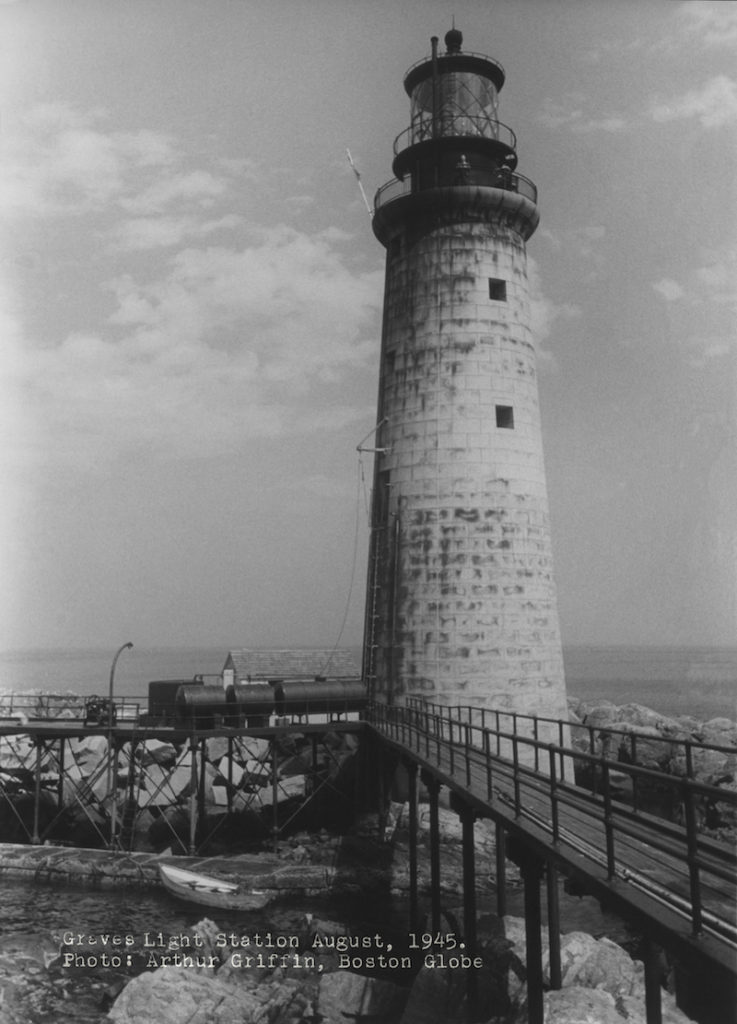
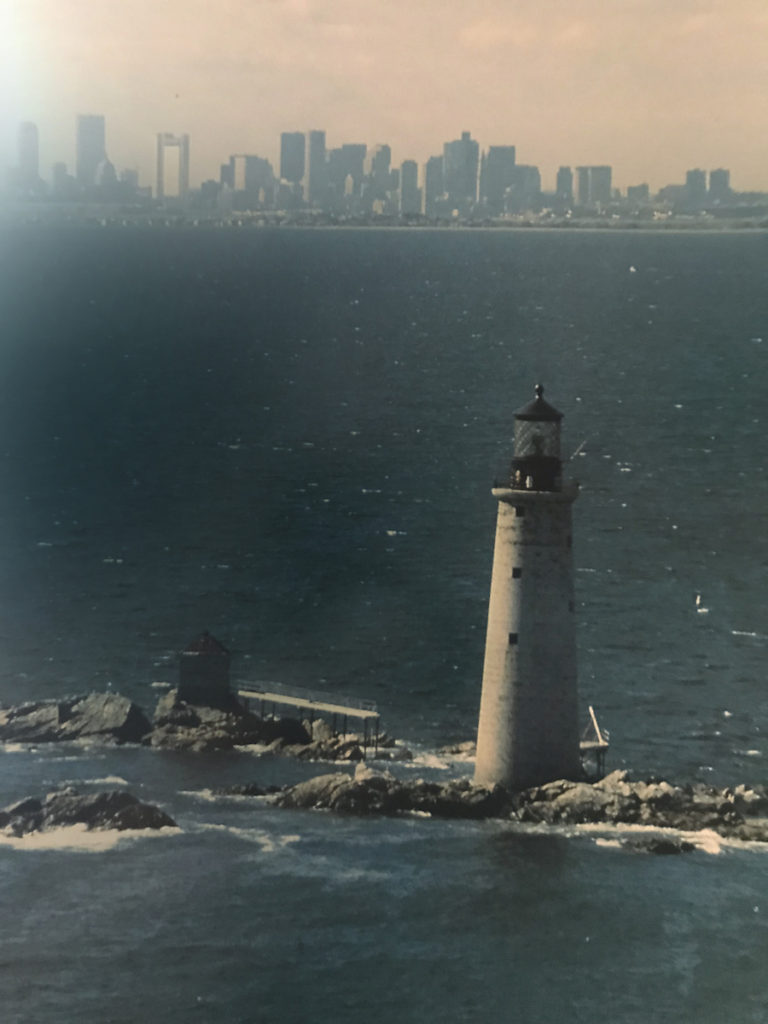
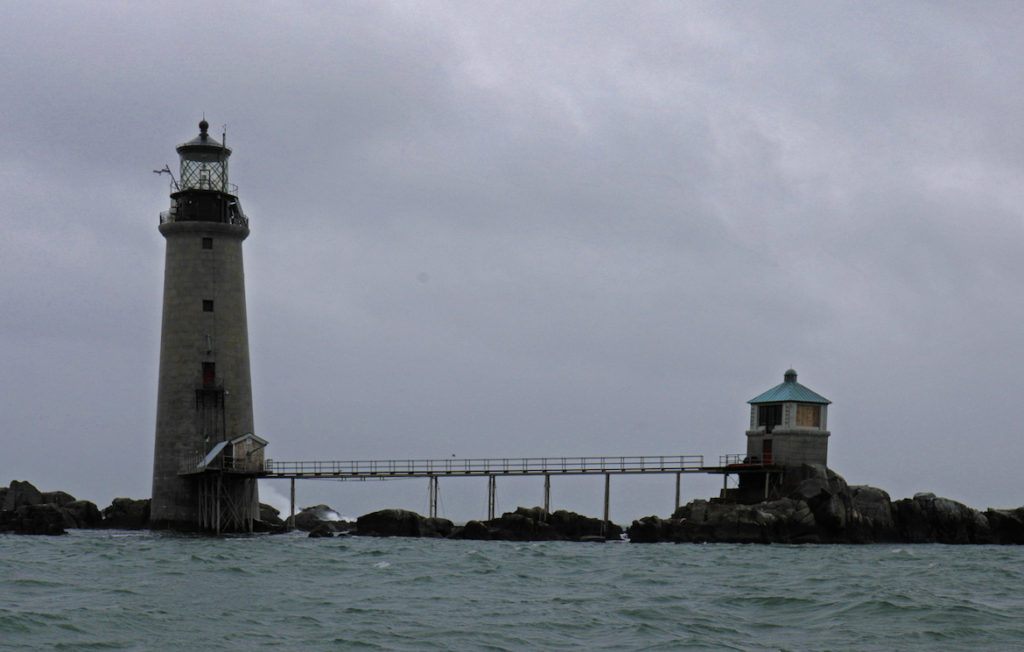

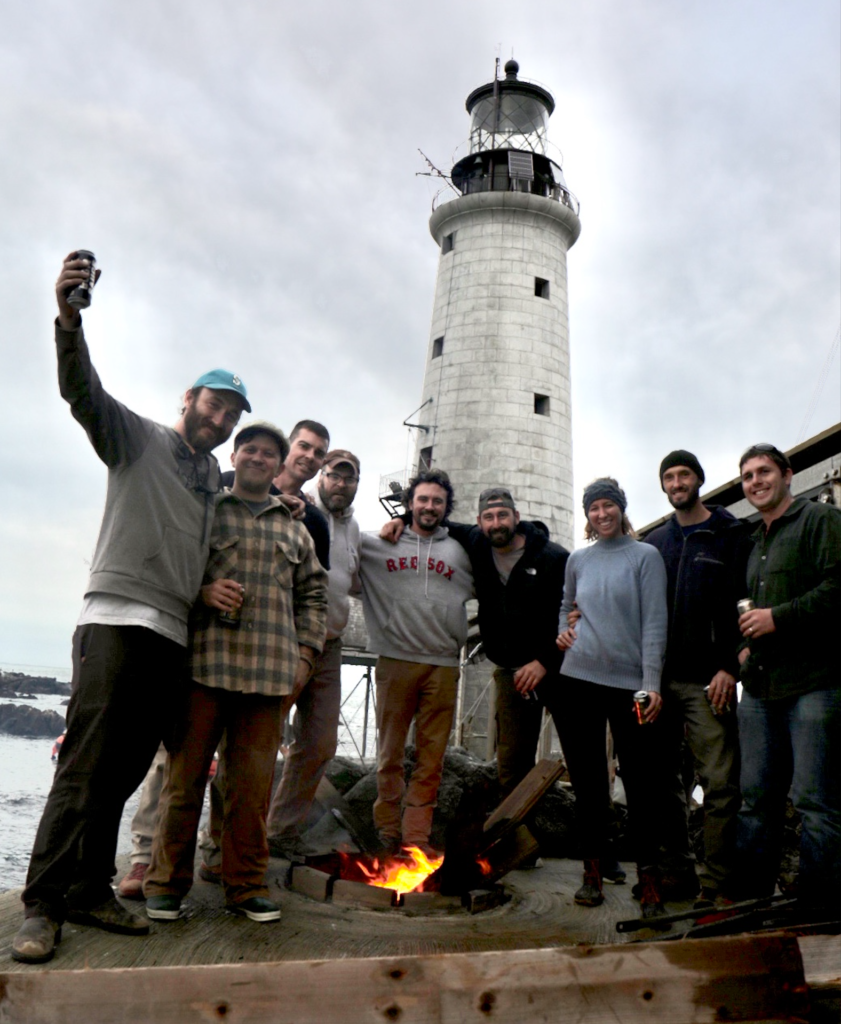
A spate of good weather and a pile of friends helped push our unfinished summer project closer to the finish line.
Nine of us hauled out prefabbed railings and assembled almost half of them in a heroic end-of-season push.
Now, as the Coast Guard keepers did before us, we can take a footbridge from Graves Light to the Oil House and back, instead of being at the mercy of the rocks and tides.
The summer-long restoration of the historic footbridge is close to complete thanks to Mark, Anna, Mike, Arron, Rich, Matt, Keeghan and Winston.
Looking good, guys! Tip o’ the cap you!
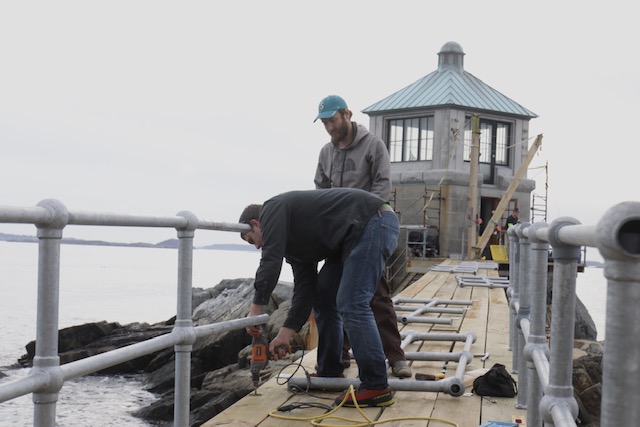
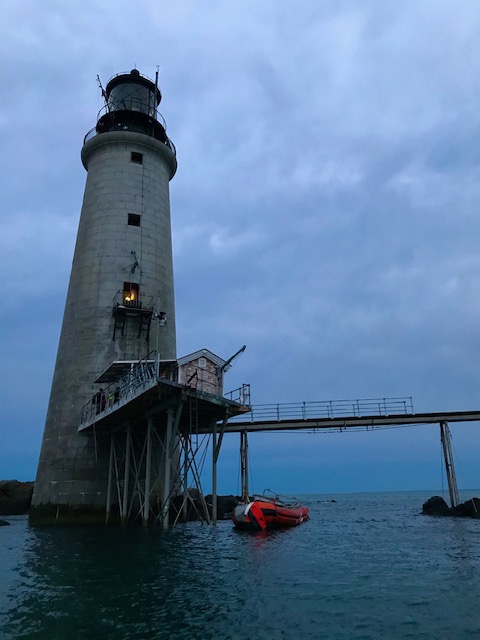

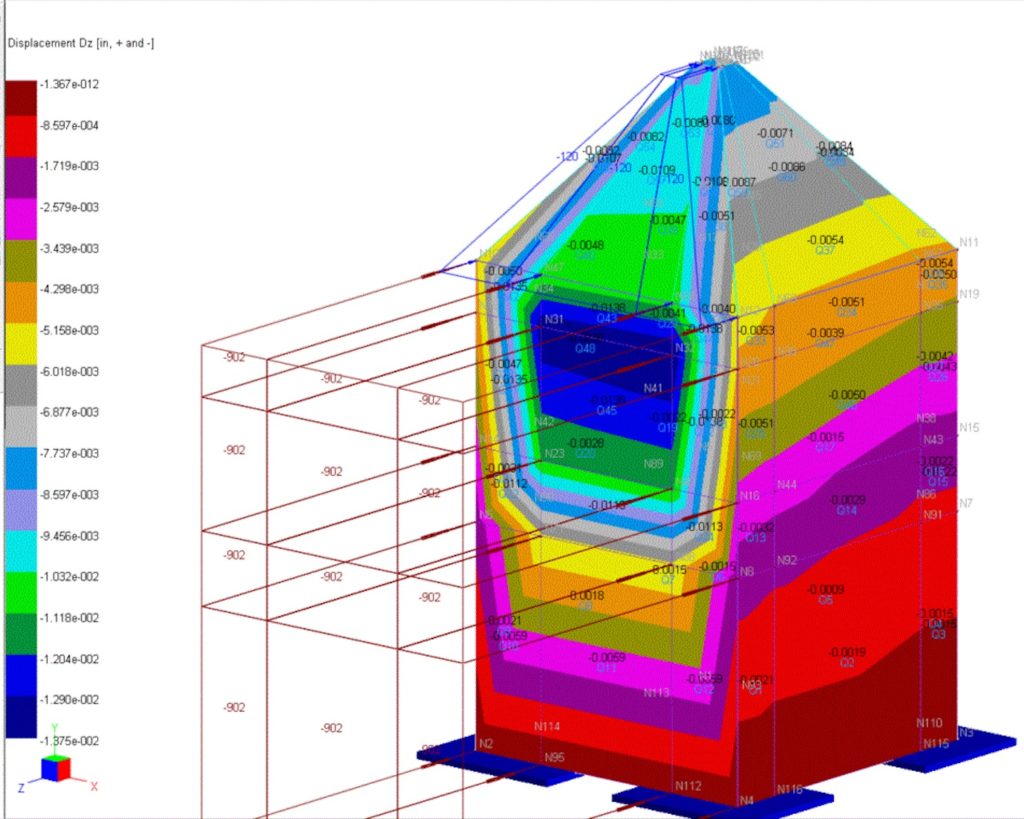
We get a lot of questions about how much of a pounding this or that modification or reconstruction will take from the sea.
A lot of engineers and others helped us think things through before we drew up the plans and went to work.
This diagram shows the load calculations on the Oil House, with its new second story.
We built a new timberframe roof to replace the old, and added stainless steel reinforcements which the original roof didn’t have.
The precast marine concrete walls of the second floor are heavily reinforced and interlock with one another. They are bolted six feet into the ledge below.
Nearby pilings for the footbridge are made from 6-inch reinforced stainless steel pipe, welded to the original US Army Corps of Engineers steel pilings that were drilled six feet into the ledge. The original ones worked perfectly for decades until a big storm snapped them off like twigs.
The windows will be protected from hurricanes by anti-ballistic shutters.
That’s the plan, of course. The sea will decide for herself what works.
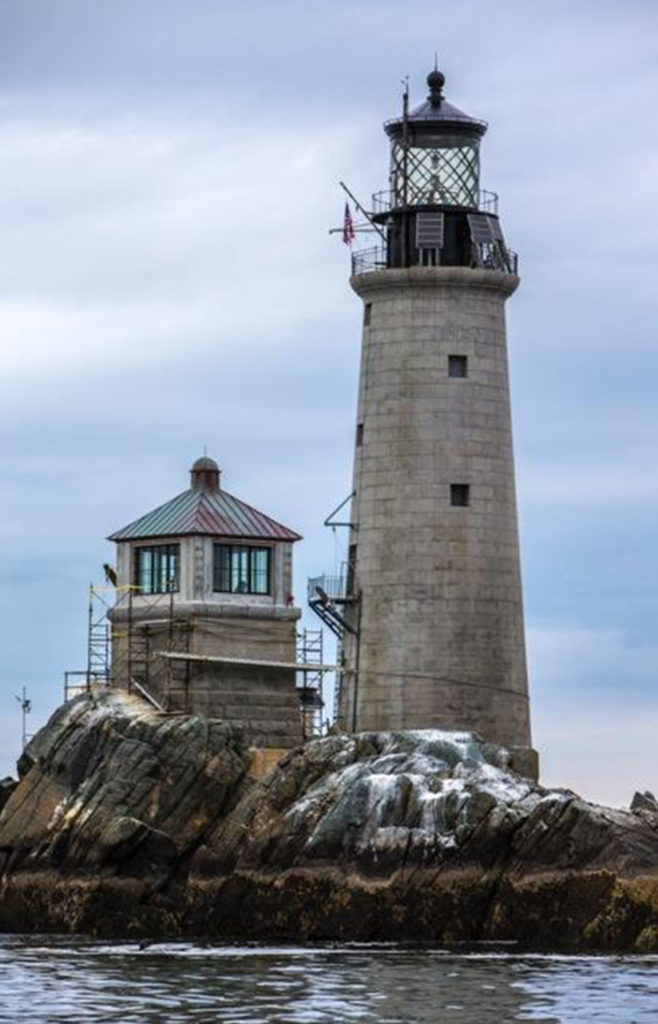
This is the big year for the Oil House restoration. We needed a decorative element to transition from the old stone blocks to the modern 2nd story.
Swenson Granite Works, a family business since 1883, cut a beautiful belt course of solid stone around the top of the original first story, to form a granite base of the new second level.
The fellows from Atlantic Restoration teamed up with King Pine Restorations to form a super-team to tackle the impossible.
Sixteen stones, each weighing 700 pounds, were hauled out in the Miss Cuddy I. She’s former Coast Guard Defender vessel that had been the shuttle to Graves Light until rough waters last year dragged her mooring and wrecked her on the ledge. Her USCG-designed hull came out intact, so we pulled off the cabin and turned her into a barge.
After hauling each block to Graves Ledge on the Miss Cuddy I, we used an old-school derrick to hoist the granite 25 feet up the ledge, and then pinned the blocks into place.
This was no small job: these guys built the Zakim Bridge and it was rough going for 3 weeks.
A tip of the cap, Mike, Jason, Chris and Rob!

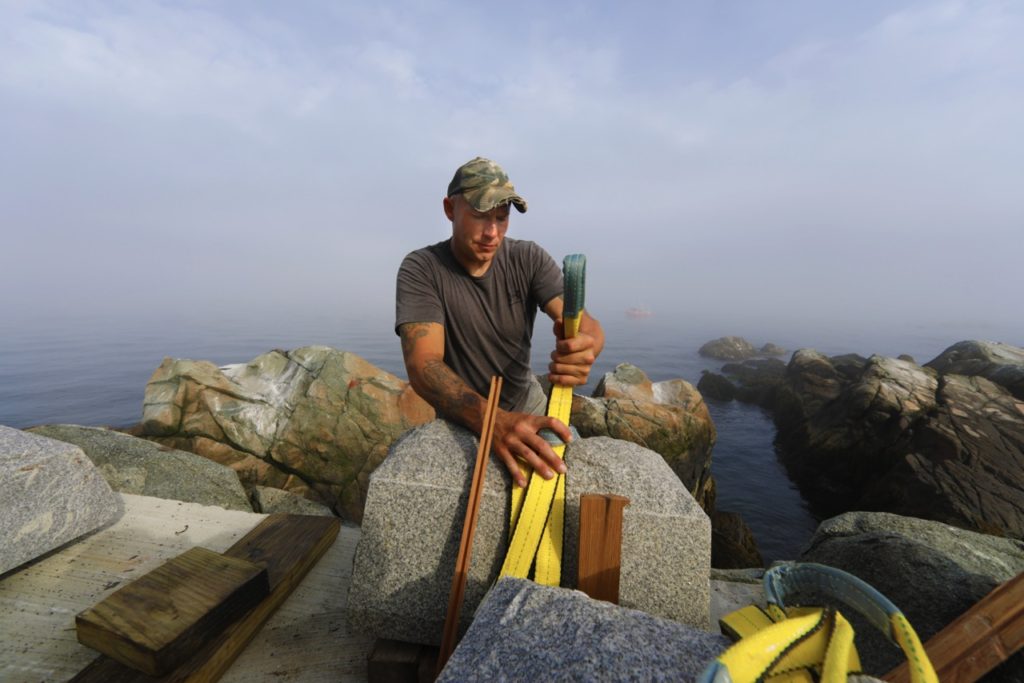
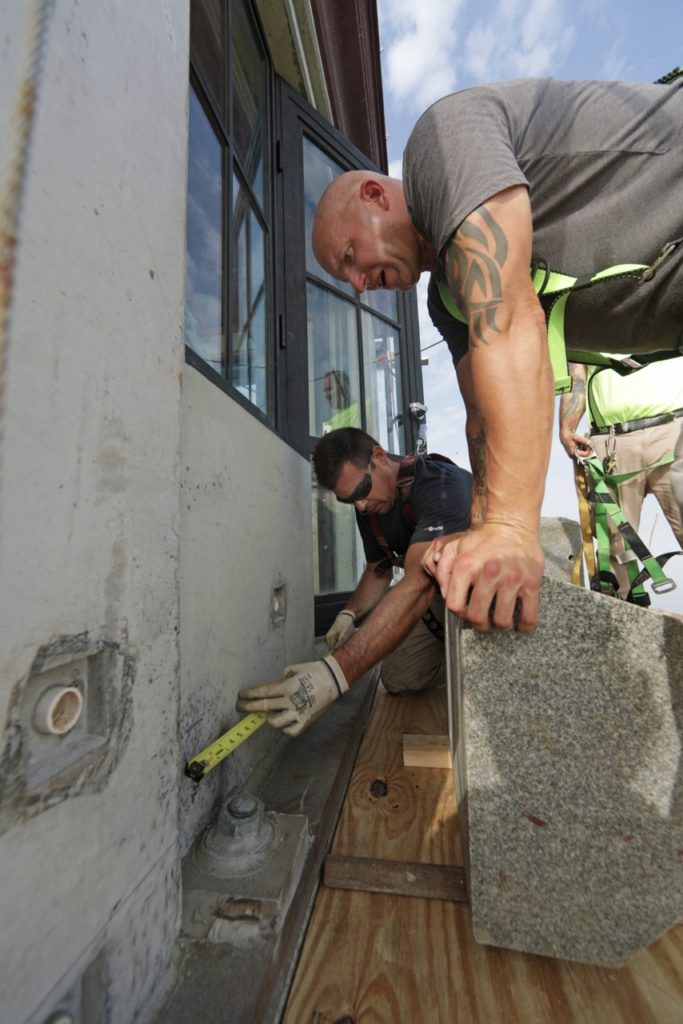
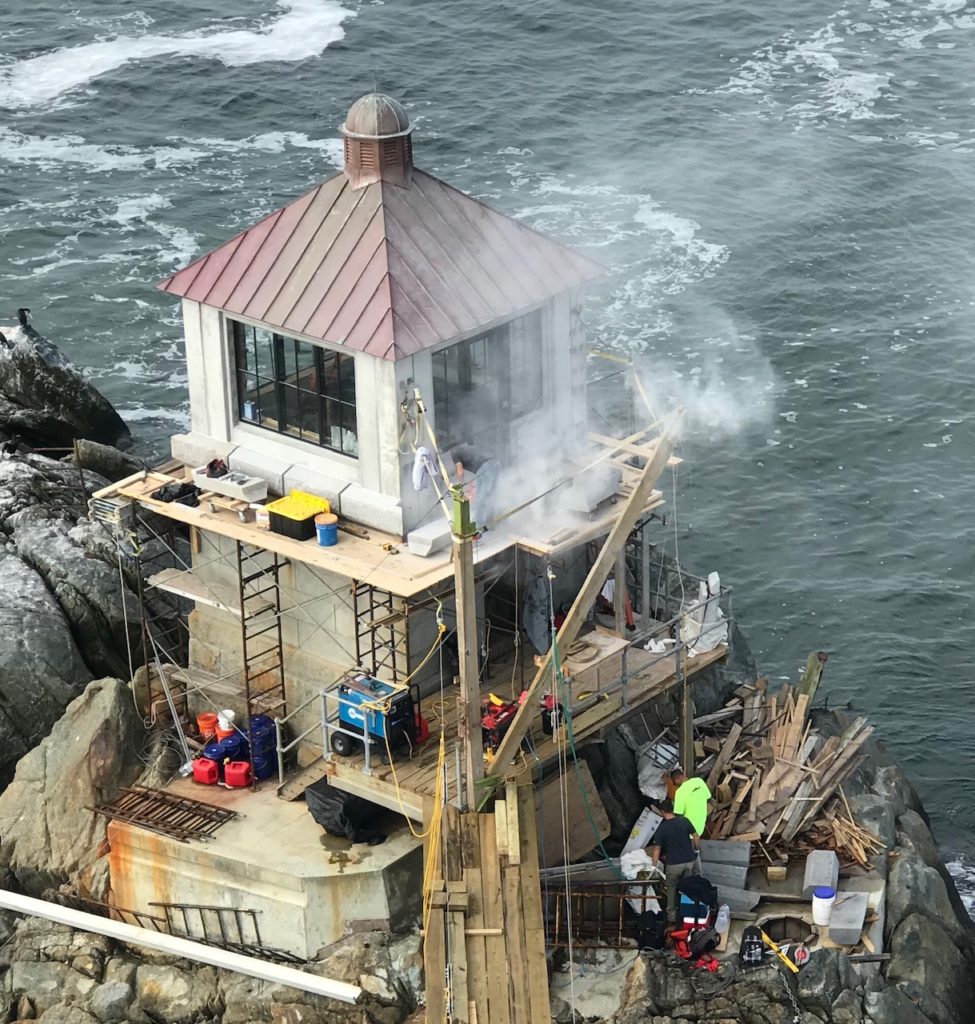
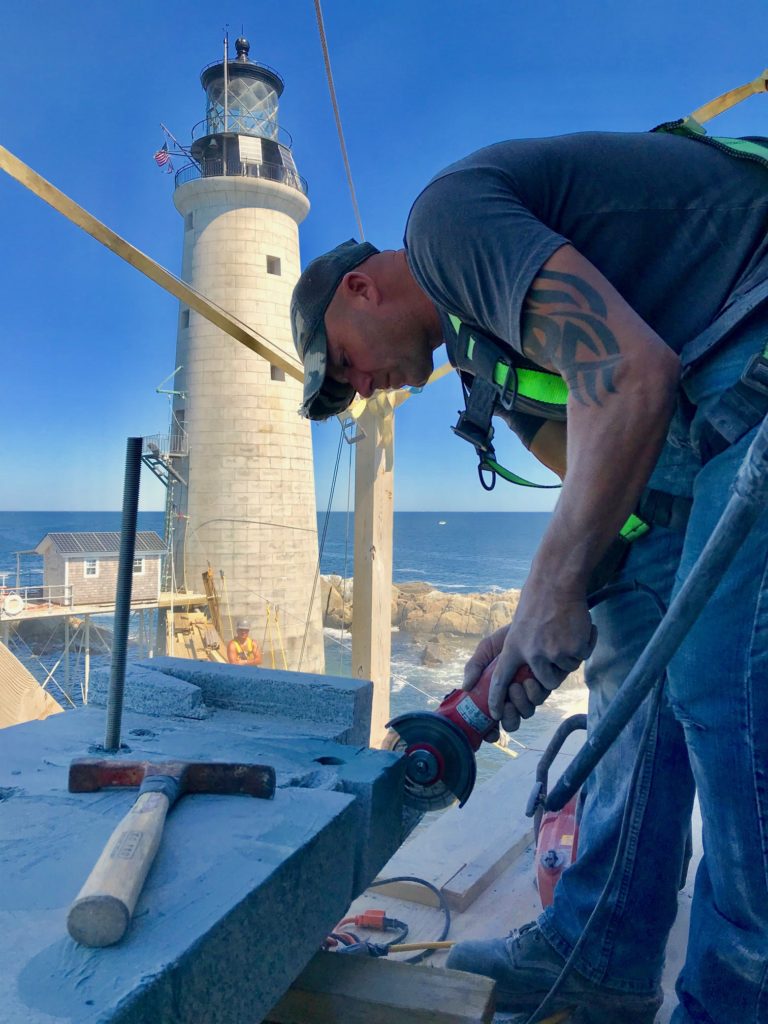
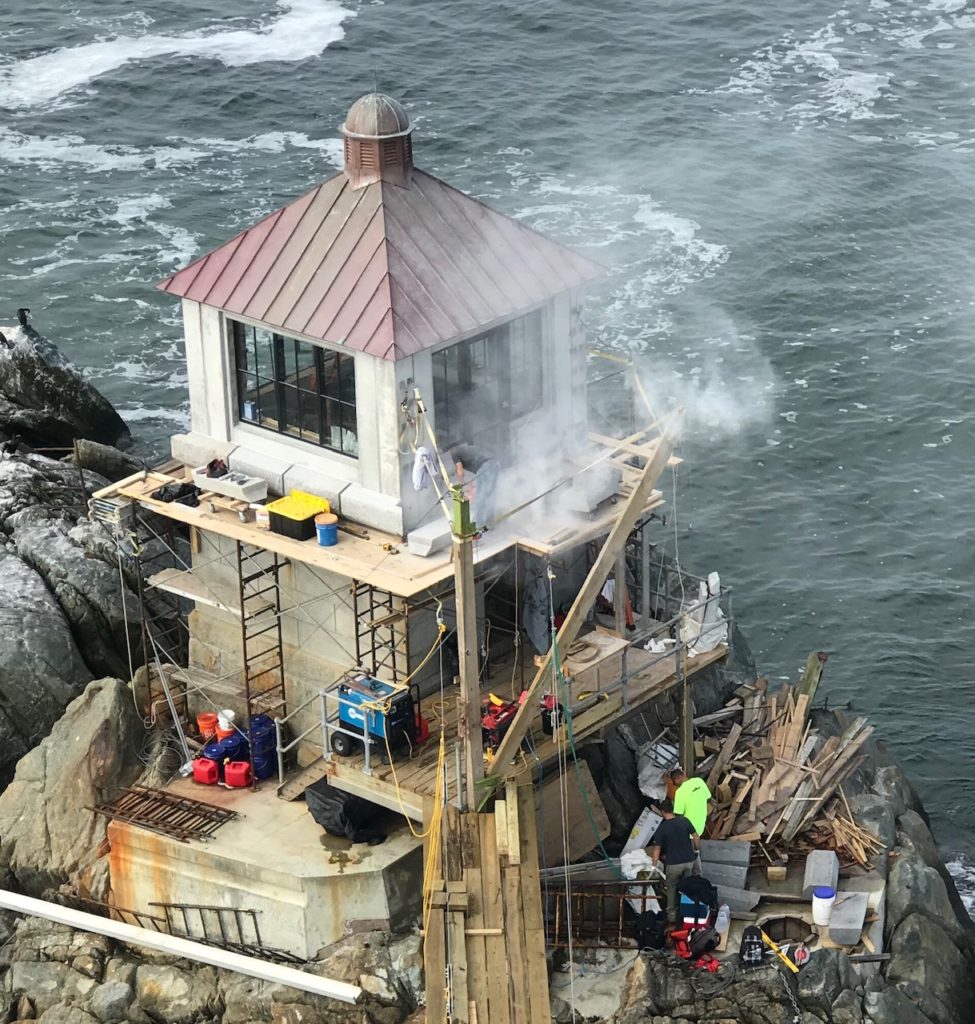
It’s been a very busy summer – perhaps the busiest yet, and the crew is finishing up several big projects which will have a lasting impact on the six-year (so far!) restoration of Graves Light Station.
Dorian and Jason of Seacoast Finishers completed the astonishing solid copper reproduction of the Oil House roof and cupola today.
A stoneworker is seen cutting a 700-pound block of granite where the new second story meets the original stone first level.
We obtained the original blueprints from the Coast Guard to reconstruct the copper roof and cupola. The craftsmen at Seacoast got the details right, adding a stainless steel frame inside to hold back the big waves.
We built the stainless steel frame over the reconstructed wooden timber frame – an exact copy, built in Maine, of the original – and repurposed many of the original 1905 timbers for the flooring and other interior features of the second level.
The second floor walls are of marine concrete, cast in Philadelphia. We installed the walls and roof by helicopter last winter.
We hauled in every section of copper and steel, piece by piece, by dinghy and over the rocks. Thank you, gents – it looks amazing!
